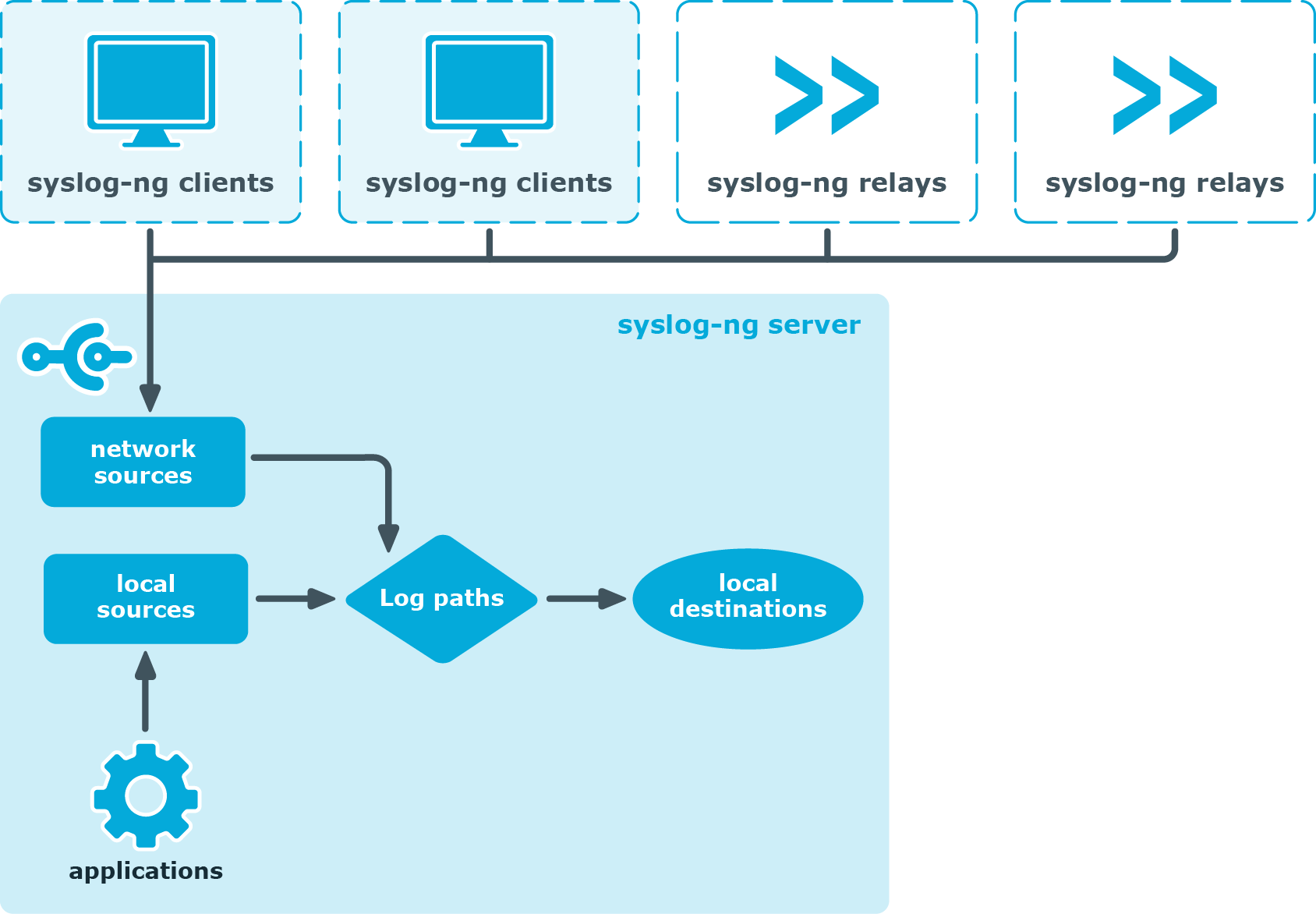Figure 3: Server-mode operation

In server mode, syslog-ng acts as a central log-collecting server. It receives messages from syslog-ng clients and relays over the network, and stores them locally in files, or passes them to other applications, for example, log analyzers.
Running syslog-ng Premium Edition in server mode requires a license file. The license determines how many individual hosts can connect to the server. For details on how syslog-ng PE calculates the number of hosts, see Licensing.
This guide contains instructions for setting up syslog-ng Premium Edition (PE) for evaluation. It covers server installation in Linux, and client installation on Linux and Windows.
In addition, basic configuration options are provided for disk buffering, reliable transfer protocol, macros in filenames, storing messages in encrypted files, and configuring syslog-ng to act as a relay.
This guide is intended as a quick introduction. For evaluating syslog-ng PE in scenarios which exceed the single client-to-server complexity (including, but not limited to usage in domain hosts, complex networks, productive environments, and load testing), refer to Administration Guide.
The list of supported platforms is available here.
For Windows, the syslog-ng Agent for Windows application is available for all Windows releases starting with Windows XP, including the 64-bit versions of the operating system.

